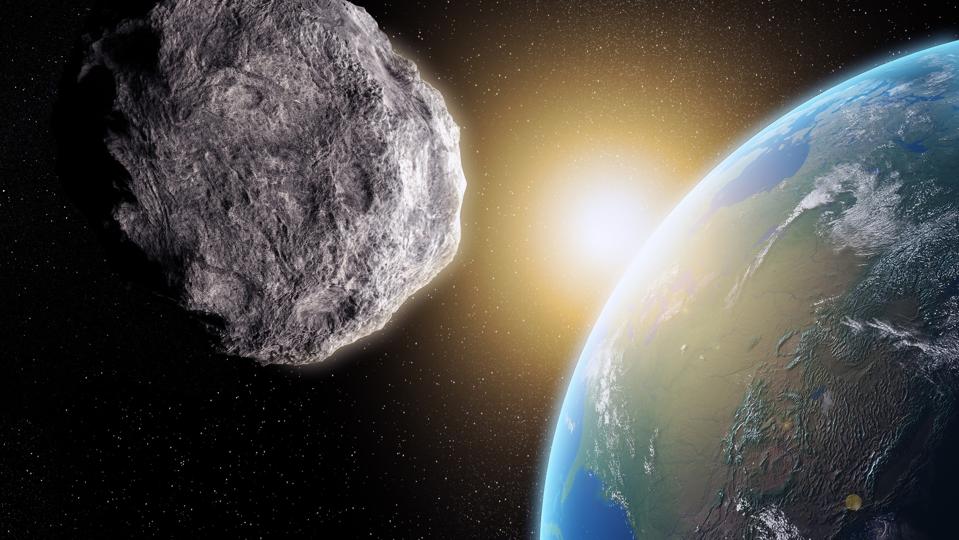A building-sized asteroid will coincidentally fly by Earth during September’s supermoon and partial lunar eclipse early Wednesday morning, offering a celestial show full of events, and NASA is monitoring the space rock because of its size and how close to the planet it’s coming, though it’s not likely to pose any threat.

Near-Earth asteroid, computer artwork.
getty
Key Takeaways
- A 510-foot asteroid will pass by Earth on Wednesday, coming within 2 million miles of the planet—around eight times further than the moon—and traveling at a speed of about 35,000 miles per hour, according to NASA’s Jet Propulsion Laboratory.
- The asteroid, called Asteroid 2013 FW13, was discovered in March 2013 by astronomers in Hawaii, and its next close approach is set for March 27, 2026 when it will come within almost 16 million miles of Earth.
- NASA labels objects that come within 4.6 million miles of Earth and are larger than 492 feet as a “potentially hazardous object,” so NASA is monitoring its potential danger, though the agency doesn’t expect the asteroid to pose any threat.
When Will The Asteroid Fly By Earth?
Asteroid 2013 FW13 is expected to pass by Earth at 4:30 p.m. AEST Wednesday, according to estimates by NASA’s Jet Propulsion Laboratory.
How Can I See The Asteroid?
Because of the distance, the asteroid may not be visible to the naked eye. However, NASA offers a virtual asteroid tracker to watch where in the solar system asteroids are in real time.
Big Number
More than 1.3 million. That’s how many asteroids NASA estimates are in the solar system.
Key Background
Asteroids are rocky objects that orbit the sun like planets, though they’re much smaller, according to NASA. They’re made up of the leftover remnants from when the solar system formed around 4.6 billion years ago.
Asteroid 2011 AM24 is one of 18,232 Apollo-classed asteroids, which are asteroids that can cross into Earth’s orbit. NASA has taken the threat of an asteroid coming into contact with Earth more seriously in recent years. In 2022, it carried out its first Double Asteroid Deflection Test, which changed an asteroid’s orbit. NASA launched a spacecraft into space and hit the asteroid, shortening its orbit by 32 minutes. NASA also sent the OSIRIS-REx spacecraft on a mission to an asteroid near Earth called Bennu in order to study it.
The spacecraft collected samples of the asteroid and dropped them off on Earth in September 2023, though the findings haven’t been made public yet. Scientists believe Bennu has a chance to collide with Earth in 2182, so that’s why research is being conducted on the asteroid. The scientists with the OSIRIS-REx mission believe Bennu has a one-in-2,700 chance of hitting a Texas-sized portion of Earth in 2182, according to a 2023 paper published in Icarus.
Tangent
September’s full moon—called the Harvest Moon—will peak Tuesday night around 10:35 p.m. EST, according to NASA. However, the moon will look full for around three days from Monday through Thursday morning, the agency said. The Harvest Moon is also a supermoon, which happens when a moon is at or near the closest point in its orbit, causing the Harvest Moon to look dramatically more radiant and larger than usual. It’s also a partial lunar eclipse, which is an imperfect alignment of the sun, Earth and moon that results in the moon passing through only part of Earth’s shadow.
This article was originally published on forbes.com.


